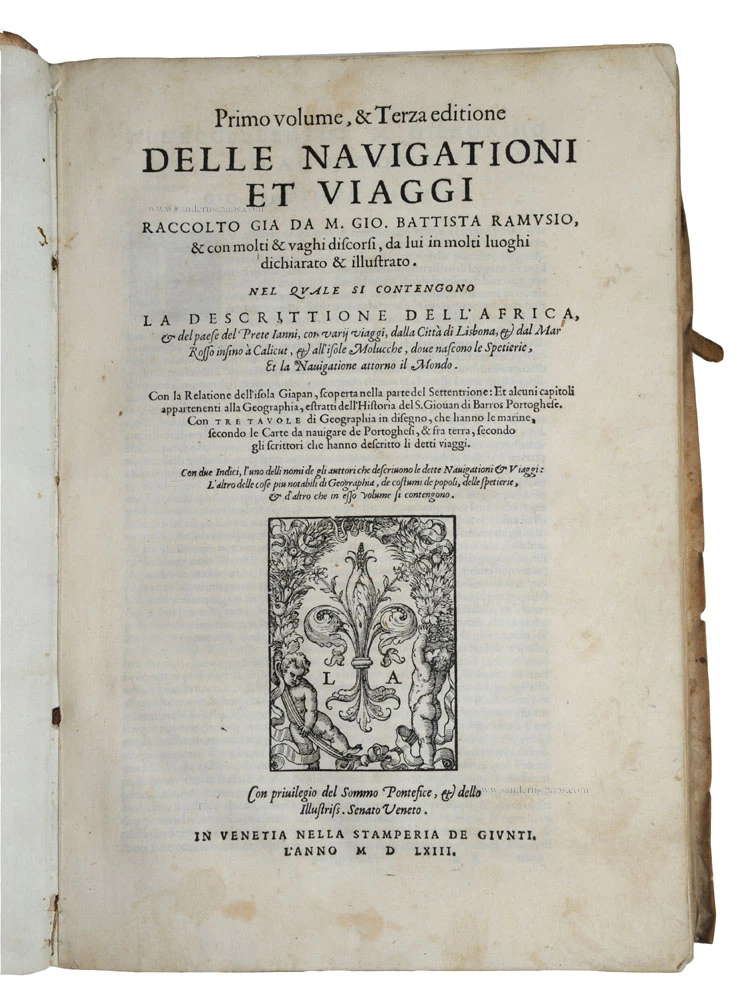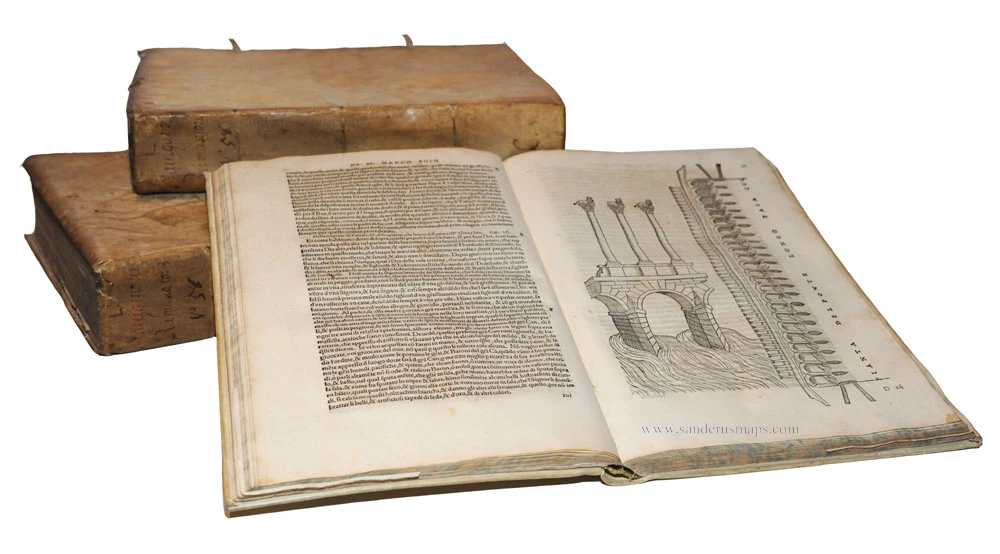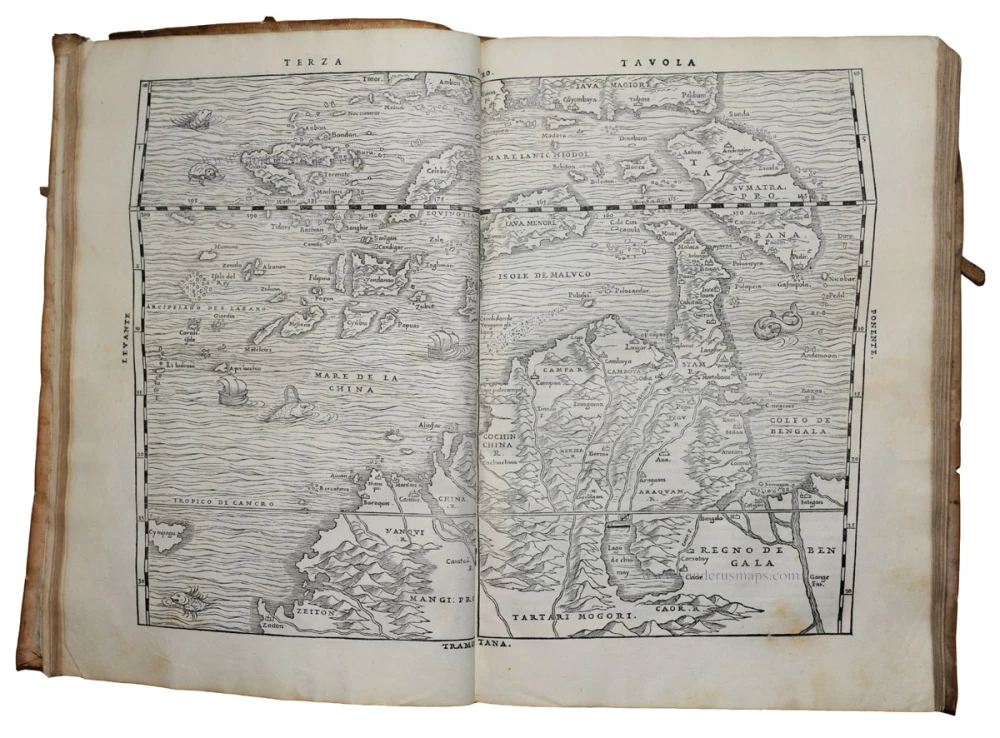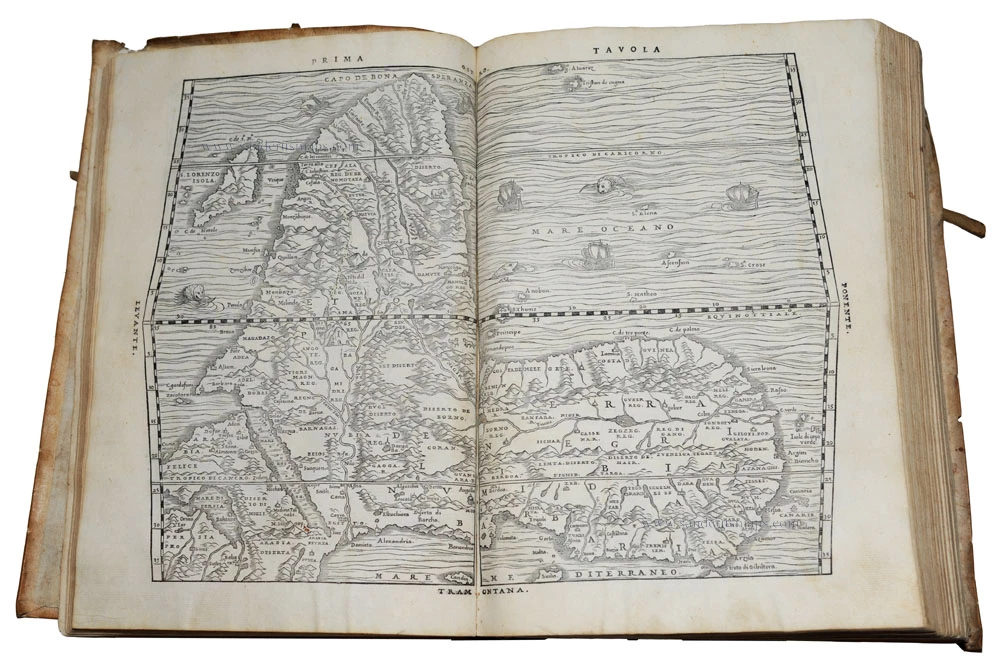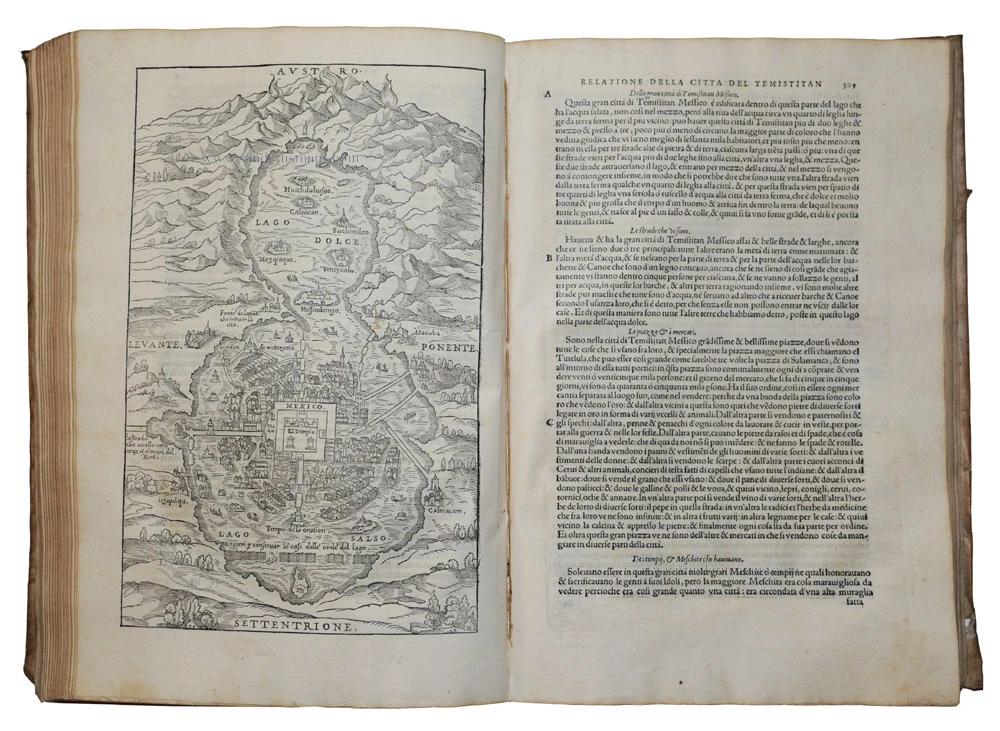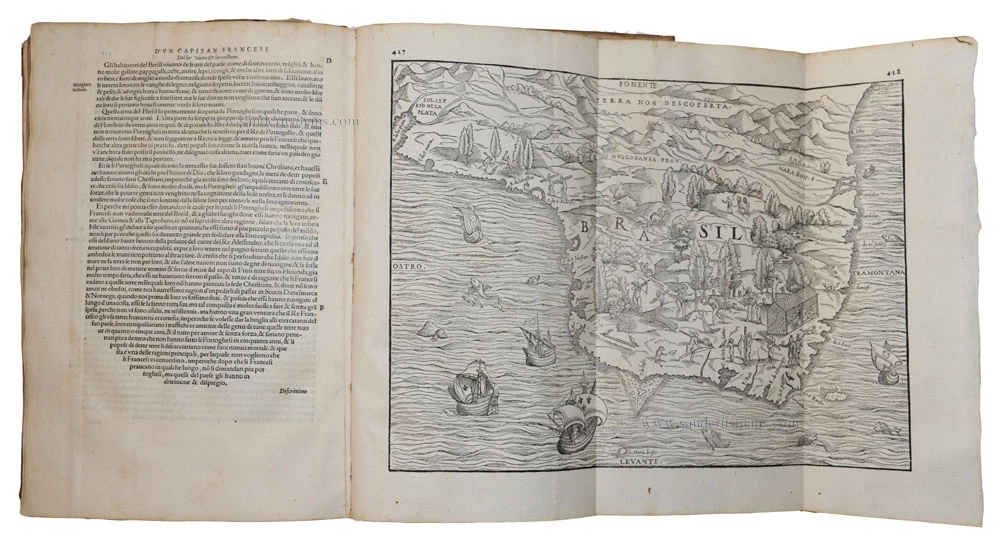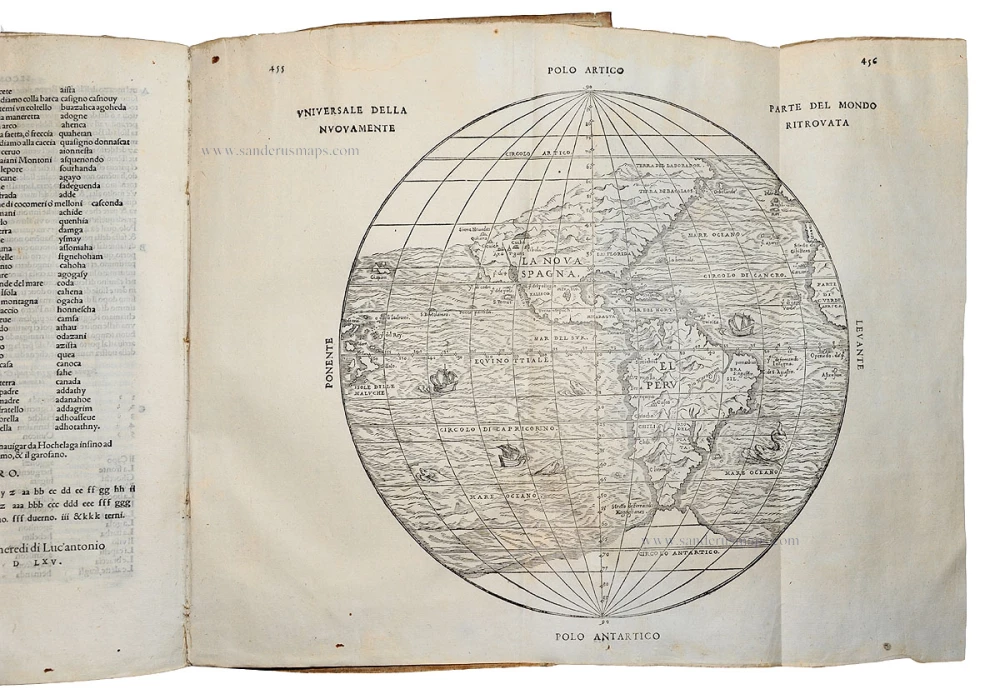Ramusio G.B. Delle Navigationi et Viaggi. 1559-1565. 1664
Giovanni Battista Ramusio (Treviso, 1485 - Padua, 1557)
Ramusio was the son of Paolo Ramusio, a magistrate of the Venetian city-state. In 1505 young Giovanni took a position as secretary to Aloisio Mocenigo of the patrician Mocenigo family, then served as the Republic's ambassador to France. Ramusio would spend the rest of his career in Venetian service. He was keenly interested in geography, and his position ensured he would receive news of all the latest discoveries from explorers around Europe as they were sent back to Venice. A learned man, fluent in several languages, he began to compile these documents and translated them into Italian, then the most widely understood of the European languages.
Ramusio compiled a collection of voyages which are the most highly valued of the sixteenth century. It is composed of accounts of voyages which had already been published, translated from French, Spanish and Latin, and also of manuscript accounts which appear for the first time. It enjoyed great success, and each of the three volumes appeared in several editions, some containing more narratives than others and minor differences in the maps.
Delle Navigationi et Viaggi.
Item Number: 13713 Authenticity Guarantee
Category: Books > Books with Maps
Sabin (America) 67732, 67739, 67740; Church 99; Hill (Pacific Voyages), 1418, 1420, 1421; Adams H.M. R136; Borba de Moraes II: 698-699; Brunet IV, 1100-1101
Mixed set (as almost always): Third edition of vol.I, first edition of vol.II and second edition of vol.III.
This collection of voyages was compiled by Giovanni Battista Ramusio (Venice, 1485-1557). The three volumes he left form the most highly valued collection of voyages of the sixteenth century. It is composed of accounts of voyages which had already been published, translated from the French, Spanish and Latin, and also of manuscript accounts which appear here for the first time.
All authors are unanimous in their praise of Ramusio's choice of published narratives. Locke, the English philosopher, states that it is "the most perfect work that nature in any language." Harisse writes, "The publication of Ramusio Raccolta may be said to open an era in the literary history of Voyage and Navigation. Instead of accounts carelessly copied and translated from previous collections, perpetuating errors and anachronisms, we find in this valuable work, original narratives which betray the hand of a scholar of great critical acumen. Not should we forget that we are indebted to Ramusio for the preservation of accounts of voyages of the utmost importance to the student of American history; and did his work contain only the 'Relatione d'un gentilhuomo del Sig. Fernando Cortese,' and the first voyage of Jacques Cartier to Canada, the two capital relations would entitle the Raccolta to a prominant place in any American library." The first volume also contains the account of Cabral's voyage in 1500, first published by Montalboddo in 1507.
Ramusio's collection of voyages enjoyed great succes, and each volume appeared in several editions, some containing more narratives than others, and with small differences in the maps. (Borba de Moraes)
"This is one of the earliest and most important collections of voyages and travels, and may be said to have opened a new area in the literary history of voyages and navigation" (Hill)
This work contains maps of great significance, including those of Brazil, Canada, New England, Africa, Asia and Japan.
Burden 34, about the map Universale della parte del mondo nuovamente ritrovata 1565: "This is the first American map to include any of the names from the travels of Francisco Vásquez de Coronado, the first European to travel extensively the south-western part of North America."
Burden 35, La Nuova Francia 1565: "The first map devoted to New England and New France, the latter name being used here for the first time."
Betz 4, Prima Tavola, 1563: "It is the first printed map of Africa in a book to show a southbound river, the Zembere ... it also shows for the first time on a printed map of the entire continent, the island of Madagascar."
Walter L. 9, Universale della Parte del Mondo Nuovamente Ritrovata, 1565: "Japan is no longer called Zipangi or some such but "Giapam" and lies some distance from North America."
Walter L. 10, Terza Tavola, 1563: "Japan now clearly belongs to Asia."
Brunet: "Collection recherchée et dont les exemplaires complets sont rares. If faut choisir les éditions les plus complètes, car chaque volume a été imprimé plusieurs fois. ..."
Based on Brunet's commentaries it is believed that, in order to be absolutely complete, with the maximum text, the collection should be composed of the first volume of the third edition of 1563, the second volume of the 1583 edition, and the third volume of the 1565 edition.
Giovanni Battista Ramusio (Treviso, 1485 - Padua, 1557)
Ramusio was the son of Paolo Ramusio, a magistrate of the Venetian city-state. In 1505 young Giovanni took a position as secretary to Aloisio Mocenigo of the patrician Mocenigo family, then served as the Republic's ambassador to France. Ramusio would spend the rest of his career in Venetian service. He was keenly interested in geography, and his position ensured he would receive news of all the latest discoveries from explorers around Europe as they were sent back to Venice. A learned man, fluent in several languages, he began to compile these documents and translated them into Italian, then the most widely understood of the European languages.
Ramusio compiled a collection of voyages which are the most highly valued of the sixteenth century. It is composed of accounts of voyages which had already been published, translated from French, Spanish and Latin, and also of manuscript accounts which appear for the first time. It enjoyed great success, and each of the three volumes appeared in several editions, some containing more narratives than others and minor differences in the maps.

